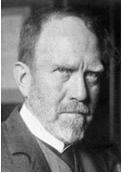Carl von Marr

Carl von Marr (February 14, 1858 – July 10, 1936), American painter, was born at Milwaukee, Wisconsin, the son of an engraver, John Marr. He was step uncle of Willy Messerschmitt.
He was a pupil of Henry Vianden in Milwaukee, of Martin Schauss in Weimar, of Karl Gussow in Berlin, and subsequently of Otto Seitz, and Gabriel and Max Lindenschmitt at the Academy of Fine Arts Munich.
His first work, Ahasuerus, the Wandering Jew, received a medal in Munich. One of his pictures, Episode of 1813, was (as of 1911) in the Royal Hanover Gallery. His Germany in 1906 received a gold medal in Munich, and was (as of 1911) in the Prussian Royal Academy at Königsberg. A large canvas The Flagellants painted in 1889, has been temporarily moved to Munich, Germany, from the permanent collection of the City of Milwaukee[1]. It received a gold medal at the Munich Exposition in 1889, a gold medal at the International Exhibition, Berlin in 1890 and a gold medal at the Columbian Exposition, Chicago World's Fair in 1893. Another canvas, Summer Afternoon, originally from the Phoebe Hearst collection, in 1911 in the permanent collection of the University of California, Berkeley, received a gold medal in Berlin, in 1892.
Marr became a professor in the Royal Academy, Munich in 1893 and Director in 1919, and in 1895 a member of the Berlin Academy of Arts.
External links
References
- This article incorporates text from a publication now in the public domain: Chisholm, Hugh, ed. (1911). Encyclopædia Britannica (11th ed.). Cambridge University Press.
{{cite encyclopedia}}: Missing or empty|title=(help)
